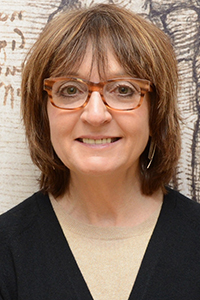A Return To Life: One Patient’s Recovery After Receiving Deep Brain Stimulation For Depression
A Return To Life: One Patient’s Recovery After Receiving Deep Brain Stimulation For Depression

For so long, Kathryn lived in a world of gray. Then, on a gloomy October morning in 2007, as she walked out into a mall parking lot, she was struck by the fiery reds and yellows of the autumn leaves.
Over the prior two decades, her severe, treatment-resistant depression had dulled her senses. Overcome by the joy of seeing color she had not seen in years, she began to sob, right there in the parking lot, leaving a teary voicemail for her psychiatrist.
Two years and two months earlier, Kathryn had become the tenth patient in the world to undergo an experimental treatment for her refractory depression, one that made use of a technology called deep-brain stimulation (DBS).
“This was something completely new,” she remembered thinking, when she first read about Dr. Helen Mayberg’s pilot study in the local paper. “Someone was thinking outside the box.”
Kathryn’s depression emerged in her last year of college. She managed to finish school, and even went on to get a master’s degree. During her Ph.D. program, however, her depression rendered her unable to function, forcing Kathryn to ask for a medical withdrawal from school.
The details of her illness are hazy, but she recalls a complete feeling of numbness–an inability to feel any human emotions. She could sit through funerals and not feel a thing; she could be at weddings and not feel any joy. She had no energy or motivation. Nothing gave her pleasure.
“There was nobody home” is how her doctoral thesis advisor once described her.
Sleep eluded her and couldn’t offer an escape. She spent her days mostly in bed, getting out only for daily appointments with her psychiatrist.
“When your illness goes on for that long, your life becomes very small,” Kathryn says, recalling how her friends and family helplessly watched her recede, eventually moving on with their own lives.
She struggled with unrelenting thoughts of suicide “not because I wanted to die; I just wanted the agony I lived with every day to stop,” she says.
After trying over 40 medications as well as electroconvulsive therapy, Kathryn was told she would never get better.
Electroconvulsive therapy, which involves putting a patient under general anesthesia and inducing a seizure that is often therapeutic, is often a last resort. With its failure, Kathryn was truly devastated, and gave herself until age 40 to stay alive–“I didn’t tell any of my doctors this,” she says. She withdrew even further, her world becoming ever smaller.
“To live without hope is an extraordinarily difficult place to be,” she recalls.
When she read about Dr. Mayberg’s experimental testing of DBS, she felt a surge of hope that she had not felt in a long time. It was 2005, and she had reached her 39th year.
This is how Kathryn found herself in an operating room in Toronto later that year, with metal electrodes implanted deep in her brain through two small holes in her skull. A switch was flipped and it sent electric pulses that stimulated tissue in one tiny part of the brain called Area 25.
For what felt like many hours, the surgeons adjusted the settings, as Dr. Mayberg held Kathryn’s hand, asking her questions about how each new adjustment felt. The device will remain in Kathryn’s brain indefinitely, running on a battery.
For a while, it seemed as if the surgery didn’t work. Many of the study participants who responded showed an improvement within six months. But a year went by, and Kathryn’s depression didn’t improve. However, Dr. Mayberg’s team kept working with Kathryn, tweaking the settings at regular appointments. It was after one such tweak, more than two years later, that Kathryn walked out into that parking lot, and into a whole new world of sights, sounds, and smells.
“I didn’t expect it to last,” she admits.
Kathryn relates that she has been living without depression for “3,861 days,” pinpointing the number as she is able to do on any given day. That’s more than 10 years.
“I would walk down the street with the biggest smile on my face,” she said, recalling how her senses started coming back online, “even being able to feel the raindrops on my face was such an incredibly wonderful experience.”
Nowadays, Kathryn wakes up in the morning, excited for the day, no longer plagued by suicidal thoughts. She sleeps unmedicated, and is off all psychiatric medications.
At 52 years old, she leads “a busy and full life.” She works in university administration, volunteers at a local hospice, and advises healthcare institutions and policy makers. Over the past 18 months, she has also become a “patient partner” on several research teams in the areas of suicide prevention, mental illness, and cardiac care. “I’m proud of the evolution from research subject to research team member and collaborator,” she says. Yet Kathryn makes clear that rebuilding her life was not easy. Finding the right DBS settings was just the first step.
“The stimulator can’t fix your life,” said Kathryn. “Recovery is a long, difficult process.”
When you’re as ill as Kathryn once was, she states that you are just focused on getting through each hour—“You’re not living, you’re existing.” And when suddenly “a veil of darkness is lifted,” where do you even start to rebuild your life?
It’s like waking up from a deep sleep and encountering a world that has profoundly changed.
“When I ‘checked out’ of grad school we were using WordPerfect as our word processor, and we weren’t using email. Suddenly I come back to this world, and I go ‘When did everything change to Word?’ And what is cut and paste? To me cut and paste is glue and scissors,” she says.
After years of not functioning, Kathryn had to learn how to live in the real world again. This is one of the reasons why the study team has continued to follow up with her regularly. Kathryn is also still in regular touch with Dr. Mayberg, who, though she now works in New York, has been “a wonderful support” and in some ways has also become her mentor.
No aspect of Kathryn’s depression remains unresolved.
“It’s nothing short of a miracle to me, and to those who have watched the transformation,” she says.
— Written By Fatima Bhojani
Click here to read the Brain & Behavior Magazine's September 2018 issue



